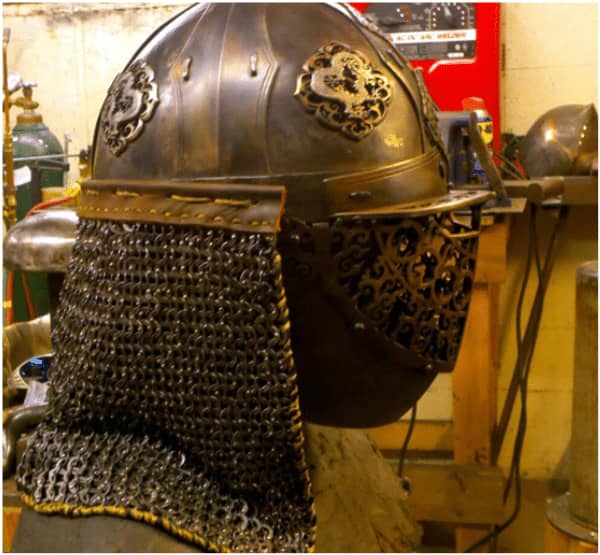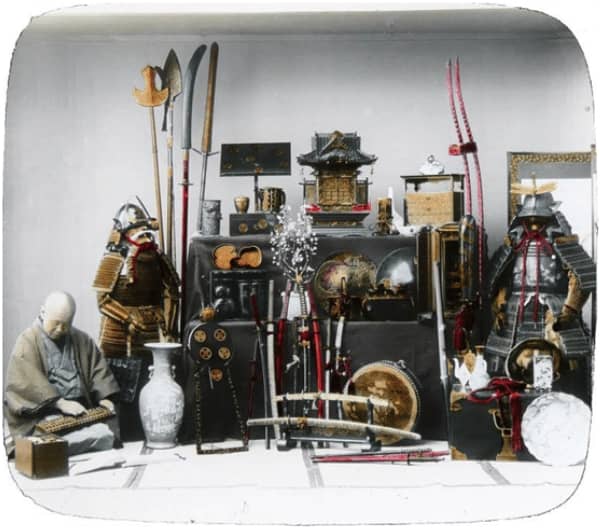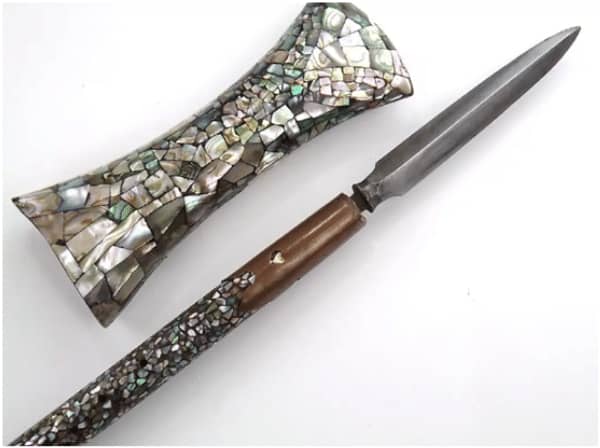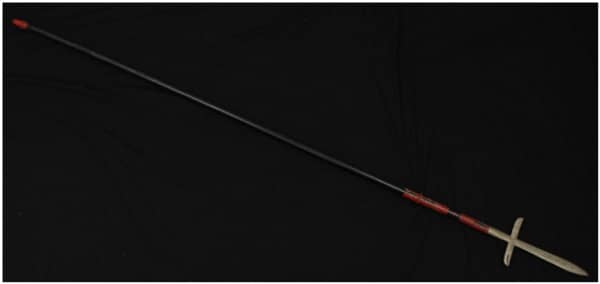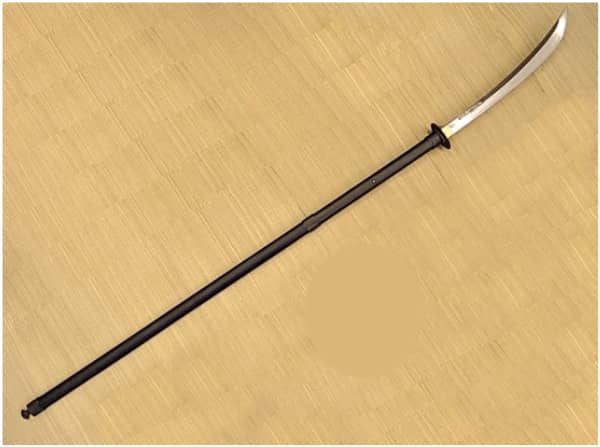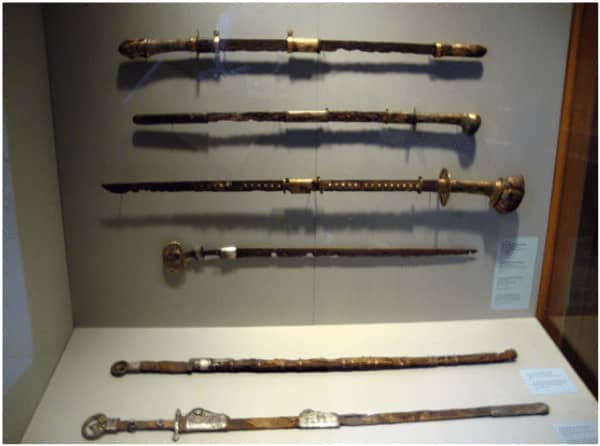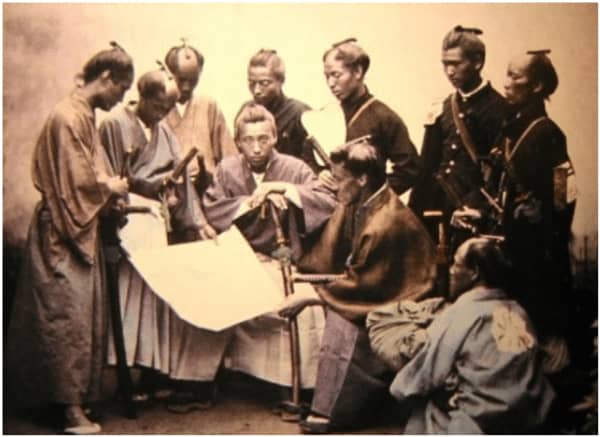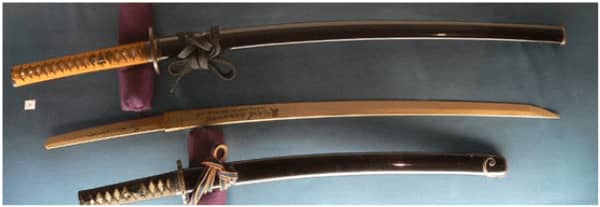The inherently cold weapons of the Japanese Yamato nation are most distinctive in their own swords. In the “Ancient Sword Era” before the Taiping and Tianqing years (931-946 AD), the Japanese learned to forge swords and swords, and then gradually rejected imported products and naturalized China, and gradually made their own valuable swords and swords with their own characteristics.
According to the research and discussion of relevant professionals in the West, Japan’s oldest famous blade maker Tianguo and Mamoru were born in the early 8th century AD. Since the ancient sword era, the manufacture of swords has gradually taken on the characteristics of the nation. The famous sword craftsmen Anfang and Shicheng came from the early period of this era. Since then, Nissei, the maker of Japanese knives, has become more and more famous, and it is far beyond the reach of neighboring countries. Even the knives of the South Asian powers cannot compare with Japanese knives.
The Japanese are good at imitating the strengths of others to obtain their essence. At the beginning, they did not hesitate to hire foreign talents to recruit foreign talents.
According to Chinese historical records, in the era of Emperor Qinshihuang, Xu Fu was sent to Fusang to seek the medicine of immortality. It is possible that the Chinese sword casting technique could be spread eastward through this. In any case, the poverty of the Bronze Age Japan is believable. Japanese copper soldiers come from the northwest, or from the south, or from China, and the native copper weapons of the Japanese nation are unearthed. The origin of the northwest was cut off early, and the culture of the south was also cut off. Therefore, from the Qin and Han Dynasties to the Tang Dynasty, Japanese cold weapons continued to be exclusively influenced by Chinese culture.
Japanese swords and swords before the 17th century all had Chinese characteristics. Chinese swords such as Tang Dao and Tang Jian deeply influenced the shape of Japanese swords and swords, and Sanskrit and Buddha statues may be influenced by Indian Buddhism. After the Tang and Song Dynasties, Japanese cold weapons were still unavoidably affected by foreign forces. For example, the ancient Japanese iron armor was quite born out of Chinese Yuan helmets or Mongolian helmets.
▲Chinese Mongolian cavalry armor, Yuan Dynasty helmet, and Japanese samurai armor
Another example is that there are many small knives hidden in the Todaiji Temple in Nara, Japan, which are quite similar to the small knives of the Turks. The knives that are still commonly used in Turkey today must have been imported to Japan by Turks or Islamic people (Persians) through sea trade. All of these are iron evidence that Japan’s cold weapons have been influenced by foreign cultures from ancient Japan to six or seven hundred years ago.
Since the Ming Dynasty in China, Japan’s Japanese sword craftsmanship seems to have been fully achieved, independent, and uninhibited, other cold weapons have gradually become considerable, and Japan’s national power has also increased with each passing year. The gradual rise and introduction of gunpowder and firearms at the end of the Ming Dynasty made the Japanese take part in the war by making their own guns and blunderbusses. During the Qing Dynasty in China, they were gradually taught by European and American whites. However, the Japanese never forgot their love for Bushido. And Japanese knives too.
On February 6, 1933, Arakawa Goro, Kuri Atsuhiko Saburo and others put forward a sword revival proposal in the House of Commons in Tokyo. On the grounds of promoting Japanese spirit and inherent culture, they asked the government to try to promote the manufacturing of Japanese swords and the fourth part of the Imperial Academy of Fine Arts. The opening of the Japanese Sword Department to accept Japanese swords and swords, to help the revival of the Japanese spirit, was unanimously approved. The Japanese regard the sword as one of the important facts of their history, culture, bushido, and force.
▲ Various traditional cold weapons in Japan
Traditional Japanese cold weapons include large spears, javelins, bows and arrows, helmets, armor, arrow burdens, combat boots, etc., as well as ordinary Japanese weapons such as broadswords, long swords and short swords. Japanese spears and javelins are quite long, and their wooden handles are bulky and strong. The tip of the spear (spear) is not big but sharp. When using it, you must practice vigorously at ordinary times, otherwise it will be difficult to be flexible.
▲The Japanese javelin head is shorter than the spear head
▲Japanese ten-character spear
▲Japanese long-handled broadsword
Japan also has a long-handled broadsword, which is as long as a spear, about eight feet long, and the blade is about two feet long. The form and manufacture of Japanese bows and arrows, helmets, armor, combat boots and other military equipment are mostly imitated from China, and those passed from China do not seem to be created by the Japanese nation, because Chinese culture has spread to Japan 2000 years ago.
Japan was deeply influenced by Chinese Buddhism and culture in the Tang Dynasty of China, so its various weapons were carved with Sanskrit scriptures and Chinese poems, Chinese dragon shapes, animal shapes and war god shapes, that is, the most individual Japanese sword is also inevitable, all influenced by China cultural assimilation. One of Japan’s oldest Jiguang Dao, engraved in the shape of a dragon on one side, engraved on the other side in the shape of a Chinese god, and engraved with Sanskrit; The shape of Tang swords in China is enough evidence that Japanese swords were directly influenced by Chinese culture.
Although Japanese swords are influenced by Chinese culture, their technology has the potential to catch up from behind. Ouyang Xiu, a poet of the Song Dynasty in China, has a “Japanese Sword Song” saying: “The road between Kun and Yi is far away, and who can cut jade handed down from generation to generation can be poor. The treasured sword is nearly out of Japan, and it is beyond the east of the sea. The fish skin is pasted with a fragrant wooden sheath, yellow and white. It is mixed with copper and copper. Hundreds of gold are introduced into good hands, and admiration can ward off evil spirits.” He praised Japanese knives.
During the Ming Dynasty in China, Chinese scientist Song Yingxing said in the chapter “Hammer Forging” of “Tiangong Kaiwu”: “The back of the Japanese sword is less than two cents wide, and it will not fall when it is placed on the finger. I don’t know what hammer method to use. The Chinese It has not been passed on.”
▲Ancient Japanese knives were originally straight-edged knives, deeply influenced by the Huan Shou Knife of the Han Dynasty and the Tang Knife of the Tang Dynasty
Japanese history records that when the hero Toyotomi Hideyoshi fought against Goryeo (the ancient name of Korea), the swords of Goryeo warriors and Chinese soldiers were cut off by Japanese knives. It was broken by the Japanese sword.
Although the ancient Japanese swords and swords are famous for their steel blades, they were originally only equipped with white wood handles and sheaths, which is enough to represent the simple and unpretentious psychology of ancient Japanese warriors. There were more than a thousand famous Japanese knives preserved in Nara, Japan, and the original white wood handles and sheaths were still kept, simple and simple, not gorgeous. This is the characteristic of ancient Japanese weapons, that is, the characteristics of its nation. The decoration of Japanese weapons is only embellished with lacquer, flower steel, copper sheets, clams, etc., and swords and swords inlaid with gold, silver, coral, and jewels are very rare.
Although most of Japan’s cold weapons are imitated from China, and its most famous Japanese sword was also influenced by Chinese culture, the form of the sword is completely different from the law of casting and tempering, and it is obviously deeply individual. Therefore, when collectors of cold weapons talk about Japanese cold weapons, they all value Japanese swords. If there are no other ancient weapons in Japan other than swords, it is true that there are not many, and there are not enough ears. As for the double-edged sword, the Japanese have always been reluctant to use it, and it has been exhausted.
▲The cold weapons that most represent Japanese culture are Japanese swords and Bushido
The characteristic of Japanese knives lies in the specialty of the hilt, which is used to hold the knife with both hands to slash fiercely, and its shape is quite similar to the knives of Burma and Thailand. Therefore, Western writers concluded from this point that the Japanese sword originated from the Burmese sword in Burma. There was a Burmese sword before there was a Japanese sword. The Japanese sword was made by imitating the Burmese. In-depth research also.
As far as the structure of the Japanese sword is concerned, it has its natural personality. Except for the sheath, the body of the knife has four parts: one is the blade body; the other is the double clip of the handle (the blade of a Japanese sword has a long neck at the upper end and two or three round holes. The handle is made of two pieces. First, clamp the neck with a sheet, sew on both sides and wrap the iron sheet on the head, and use a nail to pass through the round hole to level it, and the handle is complete); the third is the steel sheet for the hand guard (the day of the hand guard is called “E” or “镡”); the fourth is a small ornament on the handle, which is hidden outside the handle and under the ribbon wrapped on the handle. In terms of the characteristics of the sheath, there is a small knife about 10 cm long inserted into the back of the sheath (the Japanese call it “small handle”), which is not found in the knives of various ethnic groups in China and South Asia.
▲Appearance of ancient Japanese swords and swords
Click to have more knife information.

